Architectural Innovation: Efficient Recombination of Existing Technologies
Architectural innovation is considered a unique type of innovation that recombines existing technologies and concepts to develop future-proof solutions. Especially in an era where sustainability and urban efficiency are becoming increasingly important, it opens up entirely new possibilities. By integrating an effective innovation strategy, organizations can harness its potential to drive progress and meet modern challenges.
Architectural Innovation – At a Glace
- Meaning and Application: Architectural innovation reshapes how existing components interact, creating new system designs that improve efficiency, usability, or scalability without changing core technologies. It is widely applied in industries like electronics, healthcare, and manufacturing, where reconfiguring existing solutions leads to competitive advantages and market shifts.
- Conducting Architectural Innovations: Conducting architectural innovation requires identifying opportunities to rearrange existing components in a way that enhances functionality or efficiency while leveraging established technologies. This process involves cross-disciplinary collaboration, iterative design, and testing to ensure seamless integration and market adaptability.
- Advantages: Architectural innovation enables companies to enhance existing technologies with minimal research and development costs while improving performance and adaptability. It also creates competitive advantages by opening new market opportunities and extending the lifespan of established products.
- Challenges: Architectural innovation can be challenging because it requires organizations to rethink existing system designs, which may disrupt established workflows and expertise. Additionally, adapting to new configurations can create integration difficulties, resistance to change, and unforeseen technical complexities.
What is Architectural Innovation?
Architectural innovation refers to the process of reconfiguring existing product or system components in a way that changes their interactions and relationships while maintaining the core underlying technology. Unlike radical innovation, which introduces entirely new technologies, or incremental innovation, which improves existing designs without altering their structure, architectural innovation reshapes how components are organized to create new value. This approach often leads to improvements in efficiency, usability, and scalability, allowing businesses to leverage their existing knowledge while adapting to changing market demands.
A well-known example of architectural innovation is the transition from traditional desktop computers to laptop computers. While the core components—such as processors, memory, and storage—remained largely the same, their rearrangement into a more compact, portable design revolutionized the computing industry. Similarly, in the automotive sector, hybrid and electric vehicle architectures have reconfigured conventional car components to improve energy efficiency without entirely discarding existing automotive technologies.
Architectural innovation can offer significant competitive advantages, such as cost savings, enhanced functionality, and access to new market segments. However, it also presents challenges, including integration difficulties, resistance from established industry players, and the need for organizations to adapt their capabilities and workflows. Companies that successfully implement architectural innovation often foster cross-disciplinary collaboration and iterative design processes to ensure smooth transitions and sustainable growth.
Benefits of Architectural Innovation
Architectural innovation offers several key benefits by reconfiguring existing technologies in new and efficient ways. One of the primary advantages is cost-effectiveness, as companies can leverage their existing knowledge and components rather than investing heavily in entirely new technologies. This allows for improved performance, enhanced usability, and increased scalability while reducing development risks.
Another major benefit is market expansion, as architectural innovation often enables businesses to enter new customer segments or create novel applications for existing products. It also enhances adaptability by allowing organizations to respond to changing market demands without completely overhauling their core technologies. Additionally, it fosters continuous improvement by encouraging iterative design processes that refine existing solutions and create long-term competitive advantages.
Overall, architectural innovation strikes a balance between maintaining technological stability and driving meaningful change, making it a powerful strategy for sustainable growth and industry evolution.
Why is Architectural Innovation so important for Businesses?
Architectural innovation is crucial for businesses because it allows them to adapt to changing market conditions, improve efficiency, and stay competitive without requiring entirely new technologies. By reconfiguring existing components in innovative ways, companies can enhance product performance, reduce costs, and extend the lifecycle of their offerings. This approach enables organizations to capitalize on their existing expertise while meeting evolving customer needs and industry trends.
Furthermore, architectural innovation opens opportunities for market expansion by creating new product variations or optimizing existing systems for different applications. It also fosters flexibility, allowing businesses to respond to disruptions and technological advancements without undergoing radical transformation. Ultimately, companies that embrace architectural innovation can drive sustainable growth, increase customer satisfaction, and maintain a strong position in their industry.
Architectural Innovation vs Incremental Innovation
Architectural innovation focuses on reconfiguring existing components to create new interactions and system designs while maintaining core technologies. This type of innovation can lead to significant shifts in product functionality, usability, or efficiency without introducing entirely new technologies. In contrast, incremental innovation involves making small, continuous improvements to an existing product or process without altering its overall structure. While architectural innovation often requires organizations to rethink workflows and adapt to new system designs, incremental innovation is typically low-risk and aims at optimizing performance, cost-efficiency, or user experience within the existing framework.
Both architectural and incremental innovation rely on existing technologies rather than developing entirely new ones, making them less risky and more cost-effective compared to radical or disruptive innovation. They both aim to enhance product performance, meet evolving customer needs, and maintain a competitive edge in the market. Additionally, companies often integrate both types of innovation into their strategies, using incremental improvements to refine architectural innovations over time, ensuring long-term adaptability and sustainable growth.
Examples of Architectural Innovation
Architectural innovation is a key driver behind many emerging trends, as it enables the reconfiguration of existing technologies to meet evolving demands. By adapting to new requirements and maintaining core functionalities, it not only attracts new users but also provides enhanced value for existing customers across various industries.
- Laptop Computers: The transition from traditional desktop computers to laptops is a prime example of architectural innovation. While the core components, such as processors, memory, and storage, remained the same, their arrangement was reconfigured to create a compact, portable device that revolutionized personal computing.
- Hybrid and Electric Vehicles: Automakers restructured the traditional internal combustion engine vehicle architecture to accommodate electric motors and battery systems. Although many car components remained unchanged, their reorganization improved energy efficiency and paved the way for a new era of sustainable transportation.
- Smartphones: Early mobile phones and personal digital assistants (PDAs) were integrated into a single, compact device, combining communication, computing, and internet capabilities. The rearrangement of existing technologies, such as touchscreens, processors, and wireless communication, led to the rise of smartphones, transforming industries and consumer behavior.
- Digital Cameras: Traditional film cameras were restructured to incorporate digital image sensors and electronic storage while maintaining essential optical and mechanical components. This shift enhanced convenience, image processing capabilities, and storage efficiency without fundamentally changing the principles of photography.
- Modular Construction: In the construction industry, modular building techniques reconfigure traditional construction methods by prefabricating standardized building components. This innovation improves efficiency, reduces waste, and allows for faster assembly while utilizing well-established construction materials and practices.
Frequently asked questions and answers
Architectural innovation involves reconfiguring existing components or technologies to create new product designs while maintaining the core technology. This approach enhances performance, efficiency, and usability without introducing entirely new technologies, making it a cost-effective and low-risk strategy.
Examples include laptops, which restructured desktop components into a portable design, and smartphones, which combined phones, cameras, and computers into a single device. Modular homes and hybrid vehicles further demonstrate how reorganizing traditional elements can drive sustainable and efficient solutions.
Innovative architecture refers to the design and construction of buildings or structures that incorporate new, creative approaches to form, function, and sustainability. It focuses on using advanced technologies, materials, and construction techniques to address modern challenges and improve the way we live or work. This type of architecture pushes the boundaries of traditional design, aiming to create unique, efficient, and environmentally-conscious spaces.
Architectural innovation allows companies to amplify existing technologies, offering improved performance, efficiency, and cost-effectiveness without the need for completely new inventions. By reorganizing components or systems, businesses can meet evolving customer needs and expand into new markets, gaining a competitive edge. Additionally, it fosters long-term sustainability, as it helps companies adapt to changing conditions while optimizing existing resources.
Tesla can be considered an example of architectural innovation, as it reconfigured traditional automotive technologies by integrating electric powertrains and advanced battery systems into existing vehicle designs. While the core components of cars, like wheels and suspension systems, remained the same, Tesla’s innovative use of these components in a new configuration led to the creation of electric vehicles with enhanced performance, efficiency, and sustainability. This approach helped Tesla disrupt the automotive industry and establish a strong presence in the market for electric vehicles.
Sources:
- De Bono, E. (1994). Thinking course. London: BBC
- Amelingmeyer, J. (2013). Wissensmanagement: Analyse und Gestaltung der Wissensbasis von Unternehmen. Springer-Verlag
- Schwarz, E. J., Krajger, I., & Dummer, R. (2012). Innovationskompass für klein-und mittelständische Unternehmen: Neue Ideen finden und entwickeln. Linde Verlag GmbH
- Voigt, K. I., & Brem, A. (2005). Integriertes Ideenmanagement als strategischer Erfolgsfaktor junger Technologieunternehmen. Integriertes Ideenmanagement-Betriebliche und uberbetriebliche Aspekte unter besonderer Berucksichtigung kleiner und mittlerer Unternehmen. Gabler, Wiesbaden, 175-200.
- Beyer, G., & Seidel, G. (2006). Gestaltung eines systematischen Ideenmanagements. Innovationskultur und Ideenmanagement. Strategien und praktische Ansätze für mehr Wachstum, hrsg. v. Tom Sommerlatte, Georg Beyer und Gerrit Seidel, Düsseldorf, 379-403.


